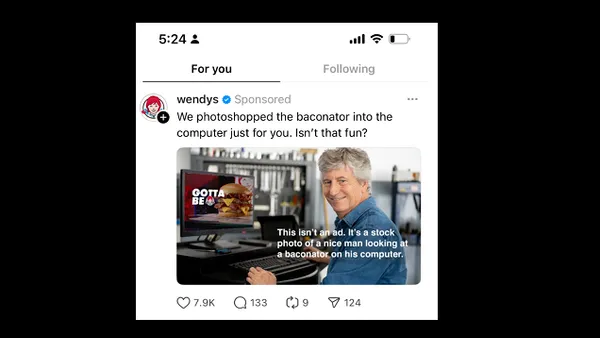Dive Brief:
- Online advertisers have to negotiate a thicket of different standards for a “viewable” ad.
- The standard effectively functions like a moving target, changing depending on the organization or ad platform with which the advertiser is dealing.
- The difference is readily apparent in video ads with widely ranging time spent with an ad required to trigger a “viewed” video.
Dive Insight:
Online advertisers are looking for more engagement and are preferring to pay for ads that are actually viewed and not just served up, but the challenge is what exactly does it mean for an ad to be “viewed?”
Depending on with whom the advertiser is dealing, that definition shifts. The Media Ratings Council and Interactive Advertising Bureau set the standard as viewable if 50% of a display ad’s pixels appear onscreen for at least one continuous second, and at least two continuous seconds for video ads. The agency group, GroupM raised its standard to 100% of pixels for one second for display ads, and 100% of the ad for half its duration for video. Facebook considers ads viewable the instant they appear on users’ screens, and Twitter charges on a cost-per-action rather than per impression basis for promoted tweets and for 100% in view for three seconds for video ads.
While announcing a change to its video ad pricing, Unruly CEO Scott Button said, “The market is currently flooded with a number of different measurement options, and it can be difficult for marketers to determine which makes the most sense for them. One thing is clear — we need to move beyond the view when measuring the success of video ad campaigns."














